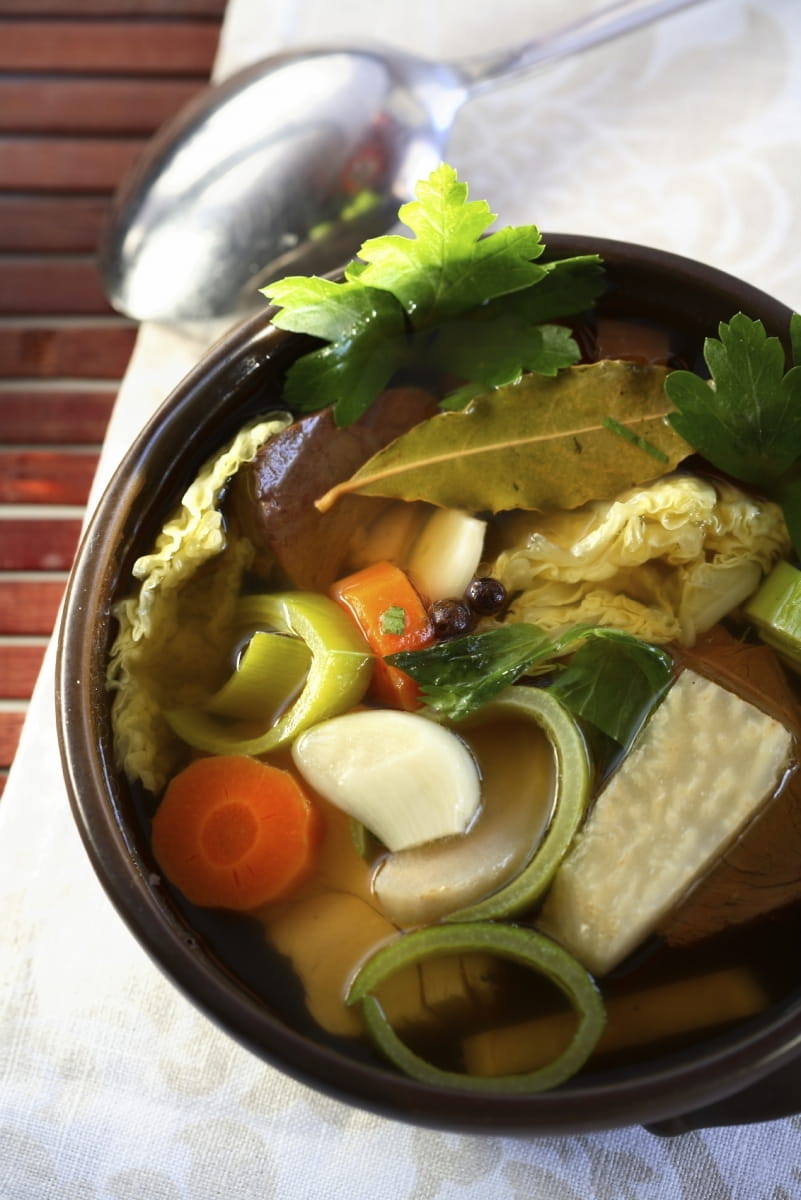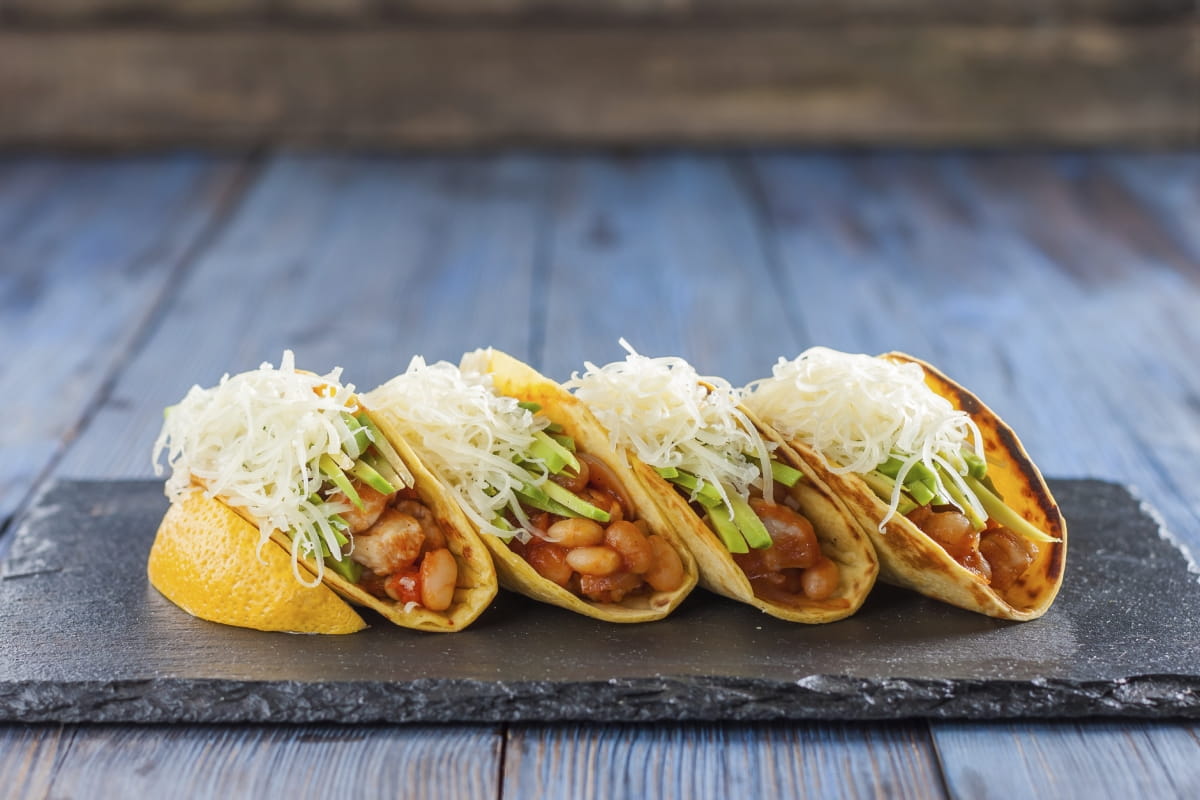Dining Around: 2016 Restaurant Trends
March 21, 2016
Download the full report here!
Quite often, inspiration for new food products can come from restaurant menus around the country. We’re taking a look at restaurant trends this week, and what we’ve found is that many of them boil down to “realness.” Consumers want what they perceive to be real food, prepared in a real way that provides real taste experiences

Part of this quest for “real” includes authentic ethnic restaurant food. Ethnic condiments, spices and main dishes have consumers’ attention as they continue to seek out these authentic flavors and cuisines from cultures around the world.
“African flavors” are hot, according to the country’s chefs. In fact, the trend saw the highest increase this year, with 20% more chefs calling African flavors a hot trend, according to the National Restaurant Association’s (NRA) annual chef survey. Flavor & the Menu says to reach for “flavor-packed spice blends” such as Za’atar, berbere, harissa, sumac and dukkah for “an on-trend, low-risk entry point into global flavors with a customer-friendly façade” that instill a “sense of adventure to all that they touch.” African and Middle Eastern flavors can also connect with consumers’ continuing desire for spicy foods with a depth beyond just heat.
Of note, authentic ethnic flavors on the whole saw the second highest increase on the NRA survey, up 14%.
A bright, tart, citrusy, berry-like Middle Eastern spice from dried flowers. Can be used on everything from ribs and chicken to doughnuts, fried foods and popcorn. “Seasoning dishes with tart, citrusy sumac is like flipping a switch: Suddenly, everything tastes brighter.” – The Wall Street Journal

An African spice blend from Egypt, consisting of toasted nuts (most often hazelnuts) and seeds with coriander and cumin, among other spices. Mix with olive oil to dip bread or sprinkle on meat, veggies, pasta or cheese.
A large part of street food’s appeal comes from authenticity of flavors. Street food is also known for simplicity of ingredients and preparation, convenience, affordability and small portion sizes. It’s an easy way to taste new flavors and experience parts of a new culture.
Street food-inspired main courses made the top 5 list of center-of-the-plate trends in the NRA’s annual survey of professional chefs.

Vandal: Chef Chris Santos made a recent appearance on the Wendy Williams Show to introduce his New York City restaurant and lounge, Vandal, which celebrates the food, art and architecture of street cultures around the world. The walls are covered with murals and installations from artists (street art “vandals”) like Hush, Apex, and Shepard Fairey, and the menu is described in Forbes magazine as “an around-the world carousel of crowd-pleasers.”
“Eating here is fun, not some cerebral challenge,” says the magazine. “The flavors are bold, the takes on various cuisines from Korean (spicy rice cakes) to Indian (curried cauliflower samosas), Vietnamese (Bahn-Mi), Argentinian (beef empanadas), and universal (pizzas and a knish reuben) are light-hearted, but full of flavor and invention.”
G Street Food: Like Vandal, G Street Food serves street foods from all over the world. QSR magazine says this of Washington D.C. restaurant: “Choosing one culture’s street food to highlight in a fast-casual setting was too limiting (for the chef/founder). The concept serves up everything from banh mis, quesadillas, and curries to falafel, Cubanos, and halal.”
Whether in the drive-thru or the farmers’ market, the demand for food seen as fresh and natural is today’s normal. Consumers are taking a hard look at the food and beverages they consume and demanding restaurants follow in the footsteps of “Big Food” and provide “real” food options that are viewed as healthier and safer.

• 36% of consumers surveyed by Mintel worried about “chemicals” in their food.
• 40% report it’s “very important” that foods use all-natural ingredients, free of GMOs and artificial flavors or colors.
• 43% “agree that free-from foods are healthier than foods without a free-from claim.
• 59% agree that “the fewer ingredients a product has, the healthier it is.”
Consumers are looking for fast food that meets their standards for fresher, healthier, better quality menu items and lean toward QSRs, that offer a “plus” factor, such as Culver’s, Chick-fil-A and In-N-Out Burger. Watch for more customization opportunities and greater availability of amenities like alcohol to further step up these restaurants in consumers’ eyes.
Where did this come from and how was it made? Restaurants know customers want these answers – and that the answers should be “locally and fresh.” From condiments and fries to brownies and beer, menus are calling out housemade items to signal freshness and realness to consumers. This item didn’t come from a “big food” factory, that word says. This was made from scratch with real ingredients; You can trust it. The same goes for calling out local sources. It speaks to items being real, fresh and natural, and this commitment and transparency builds trust with customers.
Zella’s in Hutchinson, MN, advertises “home grown local fare” and speaks to diners about their sources: “Zella’s takes great pride in showcasing the best that our local farmers have to offer. We are continuously searching for the best ingredients from local farms. We know that real gourmet food starts with the farmers!”
CrushCraft Thai Street Eats in Dallas, TX, also tells their story of realness to customers by calling out local sources and house-made items: “At CrushCraft, we take integrity seriously every step of the way - from growing or locally sourcing our own basil leaves to hand-smashing our chili peppers. We are proud our food is the real deal. Casual hangout for traditional & modern takes on Thai street food”
Let FONA’s market insight and research experts translate these trends into product category ideas for your brand. They can help you with concept and flavor pipeline development, ideation, consumer studies and white space analysis to pinpoint opportunities in the market. Our flavor and product development experts are also at your service to help meet the labeling and flavor profile needs for your products to capitalize on this consumer trend. We understand how to mesh the complexities of flavor with your brand development, technical requirements and regulatory needs to deliver a complete taste solution. From concept to manufacturing, we’re here every step of the way.
Contact our Sales Service Department at 630.578.8600 to request a flavor sample or visit www.mccormickfona.com.
Quite often, inspiration for new food products can come from restaurant menus around the country. We’re taking a look at restaurant trends this week, and what we’ve found is that many of them boil down to “realness.” Consumers want what they perceive to be real food, prepared in a real way that provides real taste experiences

Authentic Ethnic
Part of this quest for “real” includes authentic ethnic restaurant food. Ethnic condiments, spices and main dishes have consumers’ attention as they continue to seek out these authentic flavors and cuisines from cultures around the world.
African & Middle Eastern Spices
“African flavors” are hot, according to the country’s chefs. In fact, the trend saw the highest increase this year, with 20% more chefs calling African flavors a hot trend, according to the National Restaurant Association’s (NRA) annual chef survey. Flavor & the Menu says to reach for “flavor-packed spice blends” such as Za’atar, berbere, harissa, sumac and dukkah for “an on-trend, low-risk entry point into global flavors with a customer-friendly façade” that instill a “sense of adventure to all that they touch.” African and Middle Eastern flavors can also connect with consumers’ continuing desire for spicy foods with a depth beyond just heat.
Of note, authentic ethnic flavors on the whole saw the second highest increase on the NRA survey, up 14%.
SUMAC
A bright, tart, citrusy, berry-like Middle Eastern spice from dried flowers. Can be used on everything from ribs and chicken to doughnuts, fried foods and popcorn. “Seasoning dishes with tart, citrusy sumac is like flipping a switch: Suddenly, everything tastes brighter.” – The Wall Street Journal

DUKKAH
An African spice blend from Egypt, consisting of toasted nuts (most often hazelnuts) and seeds with coriander and cumin, among other spices. Mix with olive oil to dip bread or sprinkle on meat, veggies, pasta or cheese.
Street Food
A large part of street food’s appeal comes from authenticity of flavors. Street food is also known for simplicity of ingredients and preparation, convenience, affordability and small portion sizes. It’s an easy way to taste new flavors and experience parts of a new culture.
Street food-inspired main courses made the top 5 list of center-of-the-plate trends in the NRA’s annual survey of professional chefs.

Spotted:
Vandal: Chef Chris Santos made a recent appearance on the Wendy Williams Show to introduce his New York City restaurant and lounge, Vandal, which celebrates the food, art and architecture of street cultures around the world. The walls are covered with murals and installations from artists (street art “vandals”) like Hush, Apex, and Shepard Fairey, and the menu is described in Forbes magazine as “an around-the world carousel of crowd-pleasers.”
“Eating here is fun, not some cerebral challenge,” says the magazine. “The flavors are bold, the takes on various cuisines from Korean (spicy rice cakes) to Indian (curried cauliflower samosas), Vietnamese (Bahn-Mi), Argentinian (beef empanadas), and universal (pizzas and a knish reuben) are light-hearted, but full of flavor and invention.”
G STREET FOOD
G Street Food: Like Vandal, G Street Food serves street foods from all over the world. QSR magazine says this of Washington D.C. restaurant: “Choosing one culture’s street food to highlight in a fast-casual setting was too limiting (for the chef/founder). The concept serves up everything from banh mis, quesadillas, and curries to falafel, Cubanos, and halal.”
Real Food
Whether in the drive-thru or the farmers’ market, the demand for food seen as fresh and natural is today’s normal. Consumers are taking a hard look at the food and beverages they consume and demanding restaurants follow in the footsteps of “Big Food” and provide “real” food options that are viewed as healthier and safer.

Non-GMO & Artificial-Free
• 36% of consumers surveyed by Mintel worried about “chemicals” in their food.
• 40% report it’s “very important” that foods use all-natural ingredients, free of GMOs and artificial flavors or colors.
• 43% “agree that free-from foods are healthier than foods without a free-from claim.
• 59% agree that “the fewer ingredients a product has, the healthier it is.”
QSR-Plus
Consumers are looking for fast food that meets their standards for fresher, healthier, better quality menu items and lean toward QSRs, that offer a “plus” factor, such as Culver’s, Chick-fil-A and In-N-Out Burger. Watch for more customization opportunities and greater availability of amenities like alcohol to further step up these restaurants in consumers’ eyes.
Transparency & Housemade
Where did this come from and how was it made? Restaurants know customers want these answers – and that the answers should be “locally and fresh.” From condiments and fries to brownies and beer, menus are calling out housemade items to signal freshness and realness to consumers. This item didn’t come from a “big food” factory, that word says. This was made from scratch with real ingredients; You can trust it. The same goes for calling out local sources. It speaks to items being real, fresh and natural, and this commitment and transparency builds trust with customers.
Spotted:
Zella’s in Hutchinson, MN, advertises “home grown local fare” and speaks to diners about their sources: “Zella’s takes great pride in showcasing the best that our local farmers have to offer. We are continuously searching for the best ingredients from local farms. We know that real gourmet food starts with the farmers!”
CrushCraft Thai Street Eats in Dallas, TX, also tells their story of realness to customers by calling out local sources and house-made items: “At CrushCraft, we take integrity seriously every step of the way - from growing or locally sourcing our own basil leaves to hand-smashing our chili peppers. We are proud our food is the real deal. Casual hangout for traditional & modern takes on Thai street food”
FONA CAN HELP!
Let FONA’s market insight and research experts translate these trends into product category ideas for your brand. They can help you with concept and flavor pipeline development, ideation, consumer studies and white space analysis to pinpoint opportunities in the market. Our flavor and product development experts are also at your service to help meet the labeling and flavor profile needs for your products to capitalize on this consumer trend. We understand how to mesh the complexities of flavor with your brand development, technical requirements and regulatory needs to deliver a complete taste solution. From concept to manufacturing, we’re here every step of the way.
Contact our Sales Service Department at 630.578.8600 to request a flavor sample or visit www.mccormickfona.com.



